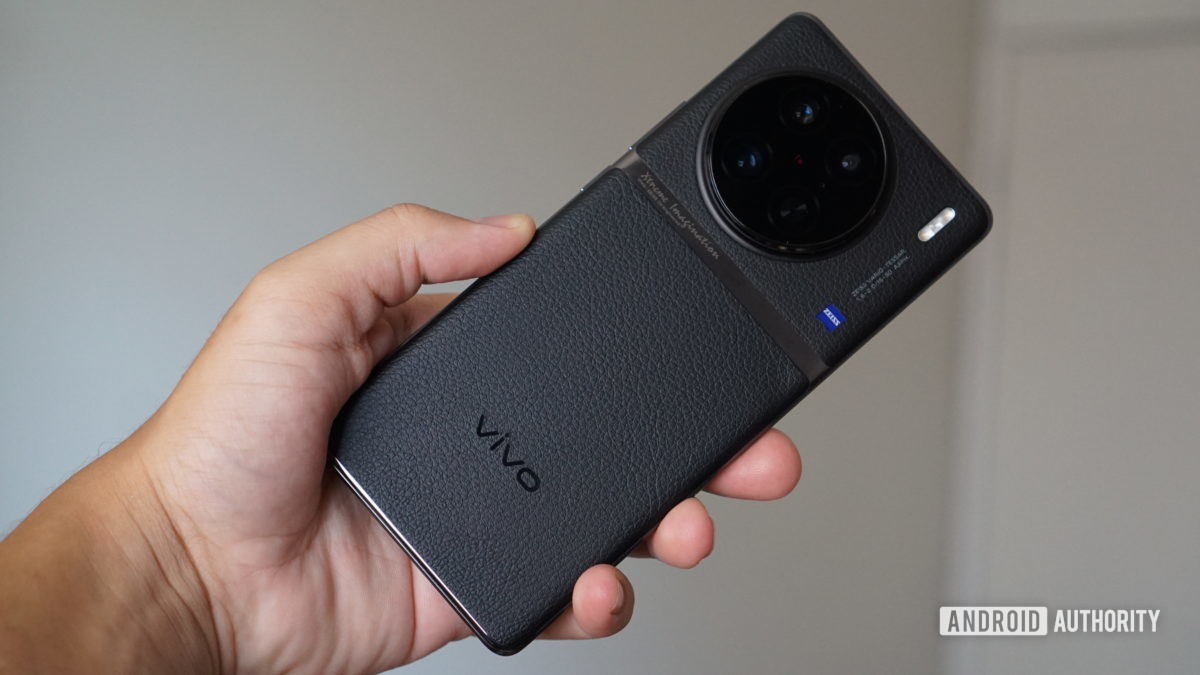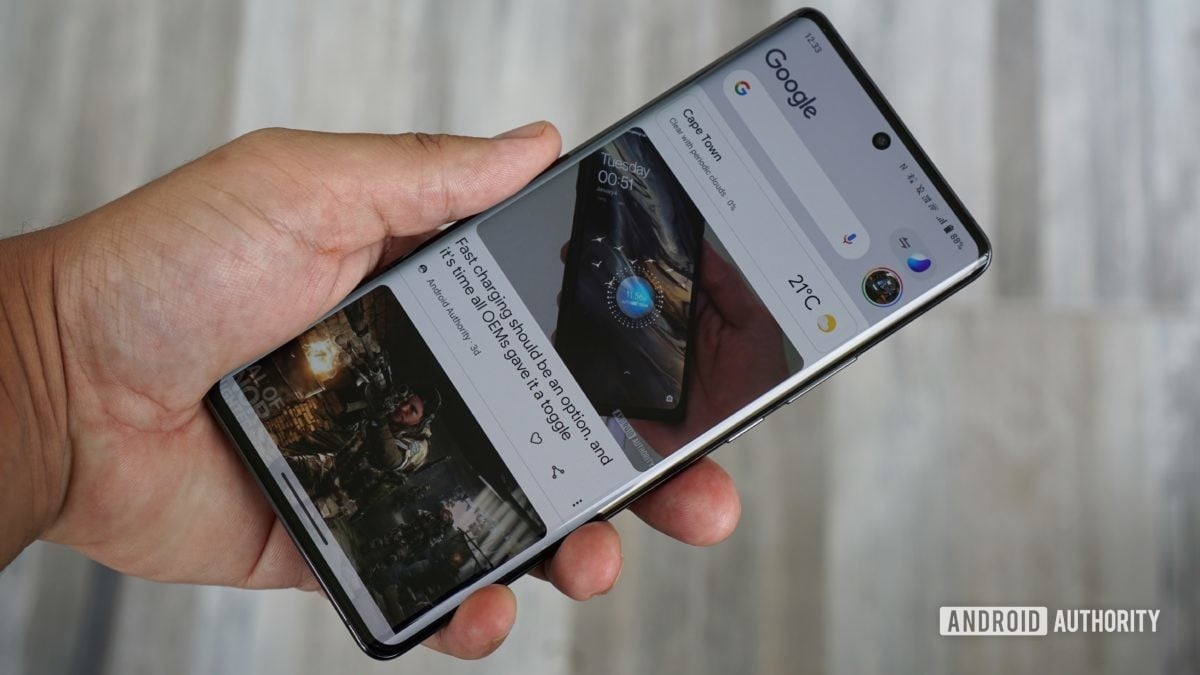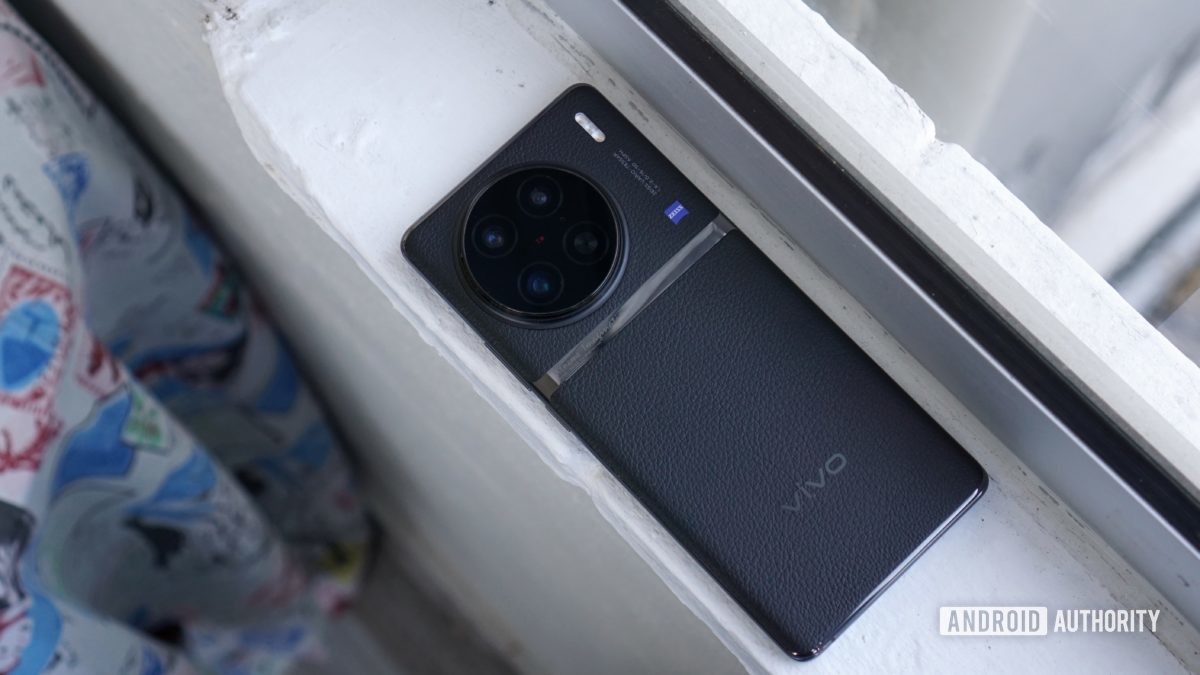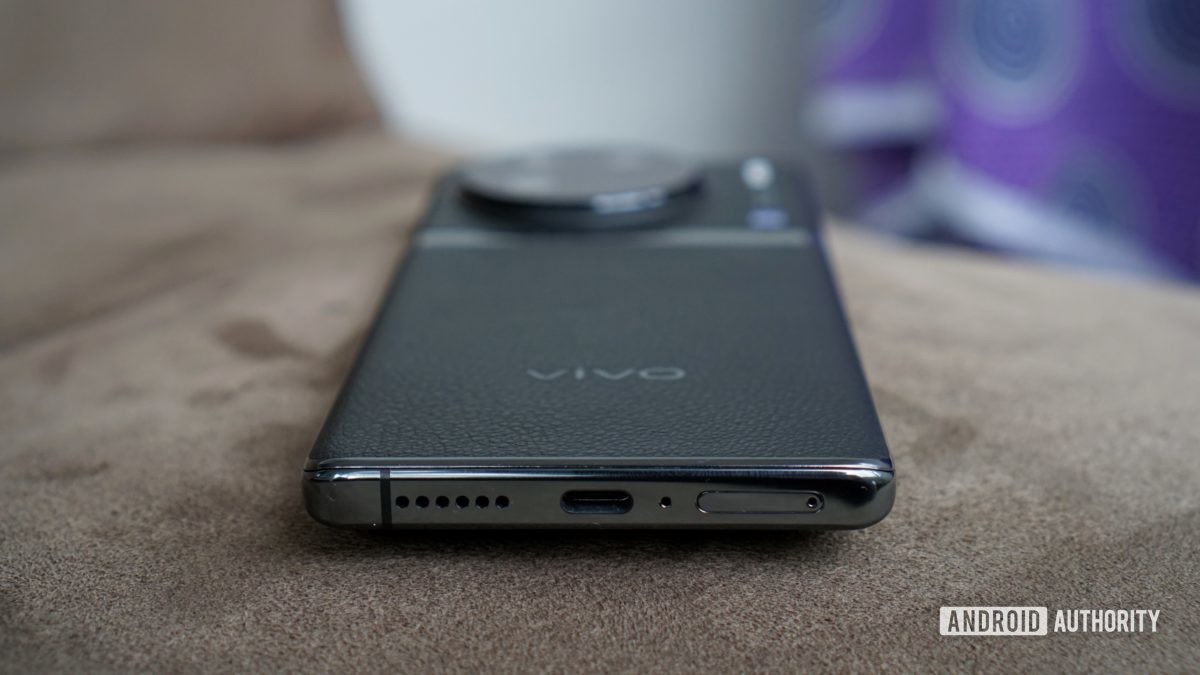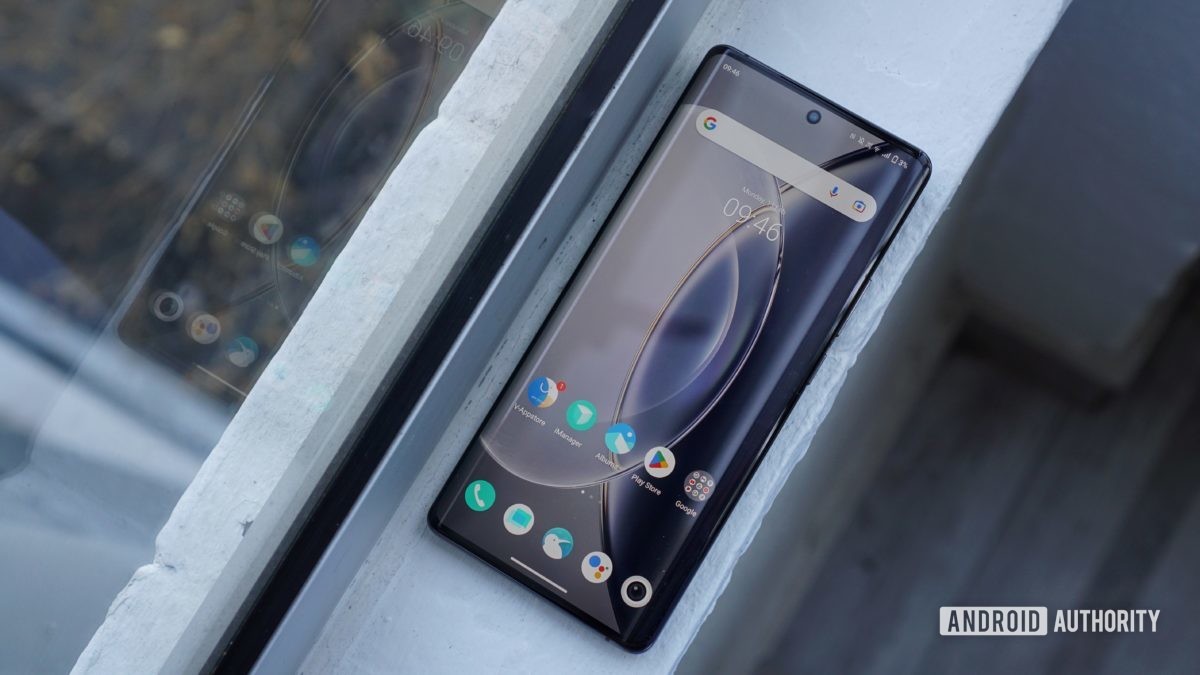Credit: Hadlee Simons / Android Authority
Vivo has put itself on the camera phone map in the last few years, bringing novel micro-gimbal stabilization tech and a partnership with photography brand Carl Zeiss. 2022’s Vivo X80 Pro was the apex of its efforts so far, sporting an impressive camera system with fantastic low-light capabilities, plus all the premium extras you’d expect from a top-end flagship phone. Is the Vivo X90 Pro a further step forward for the company’s ambitions? It’s time to find out in Android Authority‘s Vivo X90 Pro review.
About this Vivo X90 Pro review: I tested the Vivo X90 Pro (12GB/256GB) over a period of 10 days. It was running Android 13 (build number PD2242F_EX_A_13.1.11.3.W20) on the January 2023 security patch. The unit was provided by Vivo for this review.
What you need to know about the Vivo X90 Pro
Credit: Hadlee Simons / Android Authority
- Vivo X90 Pro (12GB/256GB): TBC
The Vivo X90 Pro is one of three phones in the high-end X90 series, which also consists of the standard X90 and the top-end X90 Pro Plus. Unfortunately, the X90 Pro Plus which competes spec-for-spec with the best Android phones is restricted to China, leaving the X90 Pro as the top model in global markets at the time of this writing.
Vivo’s Pro model is still a flagship-level device when you look at the specs and features, packing a new MediaTek Dimensity 9200 processor with ray-tracing support, a 50MP one-inch main camera, IP68 rating, and fast wireless charging. The X90 Pro Plus ups the ante with a Snapdragon 8 Gen 2 processor, a longer-range zoom camera, higher-resolution ultrawide camera, and the same fantastic in-display fingerprint reader we saw on the X80 Pro.
This puts the Vivo X90 Pro in an awkward spot as more of a successor to the standard X80 and the X70 Pro, while the X90 Pro Plus is more akin to an X80 Pro follow-up.
The Vivo X90 Pro will be available in Hong Kong, Europe, India, Malaysia, Taiwan and Thailand. It comes in a single color named Legendary Black (pictured). There’s no word on European pricing or a release date just yet, but the device retails for 4,999 Malaysian Ringgits (~$1,174) in Malaysia. Its predecessor, the Vivo X80 Pro, sold for £1,199 in the UK and for as much as €1,299 in other regions in Europe.
What’s good?
Credit: Hadlee Simons / Android Authority
After unboxing the Vivo X90 Pro I was greeted by a phone that looks very similar to other handsets in Vivo’s X series from the front. However, flipping the device over reveals a new faux vegan leather back with a flat grain texture that provides a premium look and feel. I also quite like the thin metallic strip running underneath the camera circle. It neatly blends into the frame and divides the top third of the phone from the bottom two thirds.
The camera housing itself is also gigantic, resembling half an Oreo cookie — or what Vivo calls the “Big Eye.” It’s not the largest camera island we’ve ever seen, but it still juts out far more than the X80 Pro’s module and even the Google Pixel 7 Pro‘s chunky camera bar. There’s not much wobble when placed flat on a surface, but I worry that the bottom of the housing will suffer more wear and tear over time, as that’s where the phone naturally rests. Nevertheless, the leather back and slightly tapered edges make this phone feel like a premium piece of kit. It also doesn’t hurt to have water resistance via an IP68 rating, as well as Schott Xensation Up glass on the display and Corning Gorilla Glass on the camera for protection.
The Vivo X90 Pro’s OLED screen is a step above typical FHD+ displays.
The Vivo X90 Pro’s display is a curved 6.78-inch OLED screen with a peak 120Hz refresh rate. The good news is that you’re getting a great viewing experience here. The 2,800 x 1,280 display might not be a QHD+ panel, but it’s a step above typical FHD+ screens on paper, and I had no complaints about sharpness at all. The screen maxes out at 1,300 nits brightness, and I had no issue using the device outdoors. Vivo also offers a variety of screen color profiles, including a Zeiss Natural Color option for more realistic colors.
Vivo adopted the Dimensity 9200 processor in the X90 Pro in lieu of the ubiquitous Snapdragon 8 Gen 2 which we’ve seen powering most 2023 flagships, including Vivo’s own X90 Pro Plus. This is our first taste of MediaTek’s top chipset for 2023, and based on its specs, it should deliver impressive performance. So what do benchmark tests tell us?
Geekbench scores, in particular, show that the Dimensity 9200 is plenty powerful, but it does lag behind the best Snapdragon silicon in a big way when it comes to CPU multi-core scores. The X90 Pro performs better in GPU-related benchmarks, though, beating out the OnePlus 11 in the Wild Life stress test at its peak, putting it in the same ballpark as the top Snapdragon processor, which is no mean feat. It also got close to the Galaxy S23 Ultra’s maximum score, though it couldn’t match it for sustained performance — more on that later.
Regardless, I had no complaints about the Vivo X90 Pro’s everyday performance during my testing; scrolling, multitasking, and launching apps were all accomplished without any judder. Gaming is a stiffer test, but Genshin Impact ran smoothly at medium settings and 60fps. GameCube and PS2 emulation was also good, although I certainly noticed some judder in more demanding games like Shadow of the Colossus and F-Zero GX. This likely has more to do with the state of Arm’s Mali graphics drivers than a pure horsepower deficit, however.
There’s no point in having a ton of raw power if the phone dies in no time flat. The X90 Pro’s 4,870mAh battery generally does a decent, if unspectacular, job. Typical usage involving YouTube videos, some gaming, and web browsing yielded over seven hours of screen-on time and just over a day and a half of usage (see the first image below). Heavier usage involving around an hour of GPS navigation, around an hour of using the camera, and browsing Reddit yielded roughly five hours of screen-on time and a full day of usage.
The Vivo X90 Pro is also equipped with 120W wired and 50W wireless top-ups. The fast charging toggle is bizarrely disabled by default, but I still clocked a zero to 100% time of 29 minutes without it. Enabling the fast charging toggle shaved three minutes off the final time. Either way, you should expect charging times of half an hour or less, which is in line with the OnePlus 11 and other super-fast charging phones. It’s worth noting that both the wired and wireless charging solutions are proprietary. The bundled 120W USB-C to USB-C charger offers 65W PPS charging too, so you should be able to charge other gadgets just fine. The only hurdle might be getting your hands on the necessary first-party Vivo wireless charger if you want maximum wireless speeds, though it does support Qi wireless charging as a backup option.
Two other positives worth noting are eSIM support and some quality stereo speakers. The former feature is long overdue, as previous Vivo flagships lacked this connectivity option. Meanwhile, the X90 Pro blows my Pixel 7 Pro out of the water in terms of speaker volume. The bottom-firing speaker is a little louder than the earpiece speaker, but the sound is reasonably balanced nonetheless.
What’s not so good?
Credit: Hadlee Simons / Android Authority
You only need to view the app drawer to see that Vivo still hasn’t addressed the bloatware issue in Funtouch OS. We counted 11 pre-installed apps out of the box, and that’s not including the Hot Apps/Hot Games icons and Vivo’s own apps (e.g. browser and Vivo App Store). In a rather galling move, Vivo actually asks you if you’d like to install even more apps during the setup process, such as Snapchat, PicsArt, Pinterest, TurboVPN, and Facebook Lite. Vivo’s skin clearly has potential thanks to its stock-like aesthetics and a decent list of features. But Vivo really needs to address its bloatware problem if it wants Funtouch OS to have any chance of unseating the top Android skins.
It also doesn’t help matters that Vivo is being left behind in the update race. The Vivo X90 Pro will be supported for three major OS updates and three years of security patches. The former update policy is decent enough, but three years of security upgrades pretty poor when Google and Samsung are all offering five years. Even BBK stablemate OnePlus is delivering four years of security patches for older flagships and five years of security patches as of 2023.
Funtouch OS is a solid Android skin that’s once again blighted by plenty of bloatware.
While performance in general and in games tends to be good, the Vivo X90 Pro heats up to an unacceptable degree under benchmark stress tests. In this scenario, the device became uncomfortably hot, particularly along the edges. Of course, these stress tests push the phone to a higher level than even demanding 3D games, but it still leaves us a little concerned about how it’ll cope with more advanced tasks later in its lifespan.
Staying with sustained performance, the 3DMark Wild Life stress test showed that the phone buckled to just ~60% of its initial performance by the end. This is close to results from the OnePlus 11, but far behind the Galaxy S23 Ultra which only dropped by ~37%, though it did muster a ~60% overall stability score, which is in line with our Galaxy S23 series testing. We didn’t notice a performance drop in actual games over extensive play sessions, but when taken in combination with the excessive heat we encountered, it’s possible the X90 Pro could be the first to blink in a marathon mobile gaming session.
Credit: Hadlee Simons / Android Authority
It’s a little disappointing that the X90 Pro screen doesn’t support refresh rates lower than 60Hz, too. The phone either sticks to 120Hz, 60Hz, or dynamically switches between the two via the “smart switch” option. By comparison, the Galaxy S23 and Galaxy S23 Plus drop down to as low as 48Hz, while many premium flagships have LTPO screens that drop down to 10Hz or 1Hz. It’s not a big deal, but a lower refresh rate can save battery life in some scenarios.
Speaking of downgrades, the in-display fingerprint sensor here is a marked step down from the Vivo X80 Pro’s fantastic 3D Sonic Max scanner. It’s still a brisk if occasionally inaccurate experience, but it’s a little disappointing to see the new scanner staying exclusive to the top-end model.
Finally, while I broadly like the Vivo X90 Pro’s design, I could really do without the garish “Xtreme Imagination” branding on the rear metal strip, as well as the “professional photography” branding at the top of the handset. Why spoil a good thing, Vivo?
Vivo X90 Pro camera review
Credit: Hadlee Simons / Android Authority
The Vivo X90 Pro’s triple rear camera system is dominated by that 50MP IMX989 one-inch main camera. This is the biggest camera sensor you can get on a mainstream smartphone today and matches the Xiaomi 13 Pro. So what does this mean for actual image quality?
Daytime snaps deliver plenty of natural bokeh owing to that large sensor size, but I found this to be a double-edged sword. On the one hand, you can get that pleasant separation between foreground and background. On the other, you need to take a step back in some instances or risk having a poorly focused subject or parts of your subject being out of focus.
In fact, it seems like the camera has a small area of focus even when stepping back, leading to color bleeding and a general lack of focus (check the edges of the flower in the 1x shot as well as the noodle bowl shot). So you might need to pull the phone back even more to get a better snap.
Otherwise, daytime snaps via the main camera usually deliver a healthy level of detail, minimal noise, and relatively vivid colors without going overboard. Thankfully, the Zeiss Natural Color profile returns as well, in case you want more realistic hues. However, the phone does apply a little too much sharpening at times.
Where that giant sensor really comes into its own is for low-light photography, and the combination of this sensor and Vivo’s great low-light credentials makes for some great night-time snaps. Expect bright shots with low levels of noise and a good level of retained detail. The phone does occasionally apply a little too much sharpening at night, though, much like the daytime snaps. Low-light snaps can also be a little soft at times. But it says a lot that the phone trades blows with the imperious Galaxy S23 Ultra when the sun goes down.
The Vivo X90 Pro’s giant 50MP main camera is capable of some class-leading low-light snaps.
Perhaps the coolest trick here is the addition of a handheld astro mode, allowing you to take astrophotography images as you would snap a night mode shot. You simply need to hold the phone relatively still for a few seconds, and it spits out an astro mode snap. Although much like the tripod astro mode, the handheld mode opts for a blue hue for the sky that can (thankfully) be disabled.
You’re still better off with a tripod for astro snaps, as this produces a cleaner, sharper image, and picture quality can be inconsistent when using your hands. For example, the mountain in the third image has a weird cast to part of it (although this is likely due to a spotlight in the city). Still, it’s a clear step above a standard night mode and means you can get more creative with your shots — no need to lug around a heavy tripod or crouch over a mobile tripod.
The 12MP ultrawide camera is a pretty solid shooter during the day, although you’ll certainly notice very soft corners, some purple fringing, and a more contrast-heavy look. You’ll even notice plenty of noise in darker areas of some scenes during the day. At least there’s a dedicated macro mode available via this camera, cropping in to 1x to deliver detailed close-ups with none of the horrible over-sharpening that plagued the Vivo X80 Pro’s mode. Overall though, this is a slight downgrade over the X80 Pro’s ultrawide lens.

Vivo X90 Pro 1x
Vivo X90 Pro ultrawide

Vivo also opted for a 50MP 2x telephoto camera, bringing more megapixels than the X80 and X80 Pro’s 2x shooter. Image quality at 2x is just fine, although detail falls off pretty quickly from 5x, with an overly contrasted look to boot. In saying so, portraits via this camera are mostly sharp and exhibit few depth errors. Vivo is also implementing a Zeiss Cine Flare portrait style in case you want a cinematic lens flare in your shot, joining a host of existing portrait styles.
Another new addition is a “Zeiss Miniature Effect” mode, which is literally a tilt-shift mode. Fortunately, Vivo lets you adjust the blur range and angle, and you can even choose Zeiss bokeh effects for the blur and toggle a night mode.
In terms of video capabilities, the Vivo X90 Pro tops out at 8K/24fps, albeit without any form of stabilization at all. Needless to say, the footage here is super-juddery. You’re better off using 4K/60fps or 4K/30fps if you want stable video. I was also glad to see the smooth Ultra stabilization option return, although I’m disappointed to see that it’s still limited to 1080p/60fps even after all this time.
Other notable camera modes include Horizon Line stabilization (limited to 1080p/30fps but keeping the horizon level), sports mode for freezing motion, pro mode, a full-resolution option for 50MP shots, supermoon mode, and the aforementioned handheld or tripod-based astro modes.
You can view full-resolution camera samples via our Google Drive folder link.
Vivo X90 Pro specs
| vivo X90 Pro | |
|---|---|
| Display | 6.78-inch QHD+ 1,260 x 2,800 AMOLED, HDR10+ 120Hz refresh rate 300Hz touch response In-display fingerprint sensor |
| Processor | MediaTek Dimensity 9200 Arm Mali-G715 Immortalis MC11 GPU |
| RAM | 12GB |
| Storage | 256GB Non-expandable |
| Battery | 4,870mAh 120W wired charging 50W wireless charging |
| Cameras | Rear: 50MP main IMX989 at f/1.75, one-inch, OIS 12MP ultrawide at f/2.0 50MP 2x telephoto IMX758 at f/1.6 Video: 8K at 30fps, 4K at 30/60fps, 1080p at 30/60/120/240fps, 720p at 480fps Front: 32MP |
| IP rating | IP68 |
| Headphone jack | N/A |
| Connectivity | IR blaster NFC Wi-Fi 6 Bluetooth 5.3 Supports SBC, AAC, aptX, aptX HD, aptX Adaptive, aptX TWS+, LDAC, LC3 codecs |
| Software | Funtouch OS 13 Android 13 |
| Dimensions and weight | 164.07 x 74.53 x 9.34mm 215 grams |
Vivo X90 Pro review: The verdict
Credit: Hadlee Simons / Android Authority
The Vivo X90 Pro takes the fight to flagship phones from big-name manufacturers, ticking almost every box you’d expect of a 2023 flagship. Plenty of performance headroom? Yep. Super-fast wired and wireless charging? You bet. IP68 rating? Sure. A great main camera (that excels at night to boot)? Absolutely.
Vivo’s handset makes several notable missteps, though, such as a busload of bloatware, a software update promise that lags behind rivals, a not-all-that-dynamic refresh rate screen, and iffy long-range camera zoom. These downsides are particularly disappointing for a smartphone that is expected to retail for over £1,000 when it finally hits Europe. If it comes in lower than that, we’ll revisit our verdict, but considering its Malaysian launch price is identical to the X80 Pro, it seems likely we’re looking at a four-digit asking price in Europe once again.
The X90 Pro ticks plenty of boxes, but Vivo still isn’t learning from past mistakes.
There are quite a few alternatives on the market if you want a flagship phone with all the bells and whistles. The Galaxy S23 Ultra ($1199.99 at Samsung) is the top dog right now — Samsung’s phone brings standout features like a 200MP main camera, 10x periscope camera, an overclocked Snapdragon 8 Gen 2 processor, integrated S Pen and a QHD+ 120Hz screen. The Vivo phone delivers similarly great low-light image quality, a narrower design, and faster wired/wireless charging, but Samsung’s ultra-phone is more well-rounded and will be supported with security patches for an additional two years.
It may be a year old, but the Vivo X80 Pro (Rs86999 at Vivo) is also worth considering if you like the idea of a Vivo flagship. It has an older (albeit still powerful) Snapdragon 8 Gen 1 processor and less impressive low-light capabilities, but it improves on the X90 Pro by offering an 8MP 5x periscope camera, a QHD+ screen, and one of the most accurate and reliable in-display fingerprint readers we’ve ever seen.
You should also strongly consider the Google Pixel 7 Pro ($899 at Amazon) if you want a premium experience without a premium price tag. Google’s phone doesn’t have particularly fast wired or wireless charging, and low-light image quality is a smidgen behind Vivo. However, the Pixel 7 Pro brings great features like a QHD+ screen, a 48MP 5x periscope camera, exclusive Pixel software features, and a lengthy update commitment.
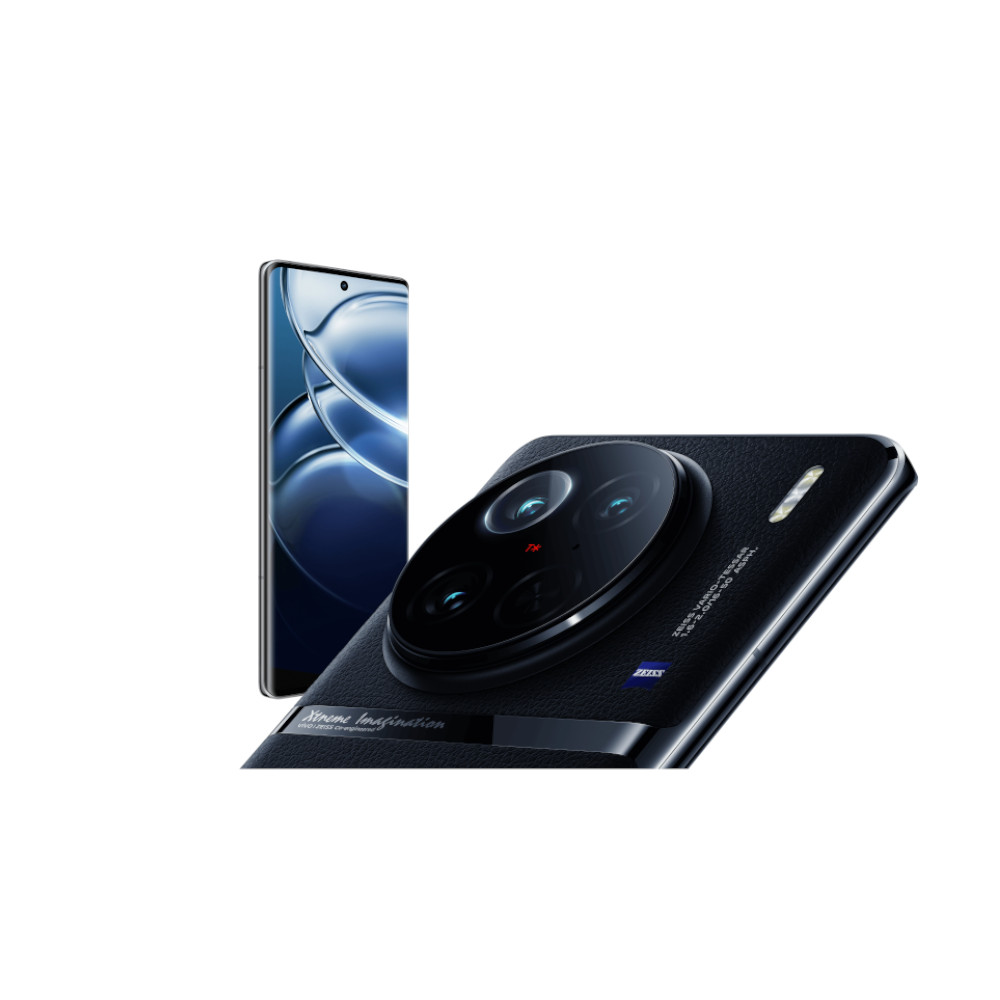
Vivo X90 Pro
- Elegant design
- Great display
- 120W charging
The Vivo X90 Pro is a welcome upgrade in the Vivo X line. Look for fast charging, a nice display, big cameras, IP68 rating, and a new premium look and feel.
Top Vivo X90 Pro questions and answers
Is the Vivo X90 Pro waterproof?
The Vivo X90 Pro has an IP68 rating, making it dust- and water-resistant but not waterproof.
Does the Vivo X90 Pro have Gorilla Glass?
The Vivo X90 Pro has Schott Xensation Up glass on the display and Corning Gorilla Glass on the camera for protection.
Is the Vivo X90 Pro available in USA?
No, the Vivo X90 Pro is not available to buy in the US and is not expected to launch in North America.
Does the Vivo X90 Pro have Google services?
Yes, the Vivo X90 Pro has Google Services and access to the Play Store.
Is the Vivo X90 Pro Plus coming to global markets?
Vivo hasn’t launched the X90 Pro Plus in global markets yet, but it is expected to launch later in 2023.
Does the Vivo X90 Pro support 5G?
The Vivo X90 Pro supports sub-6GHz 5G.

